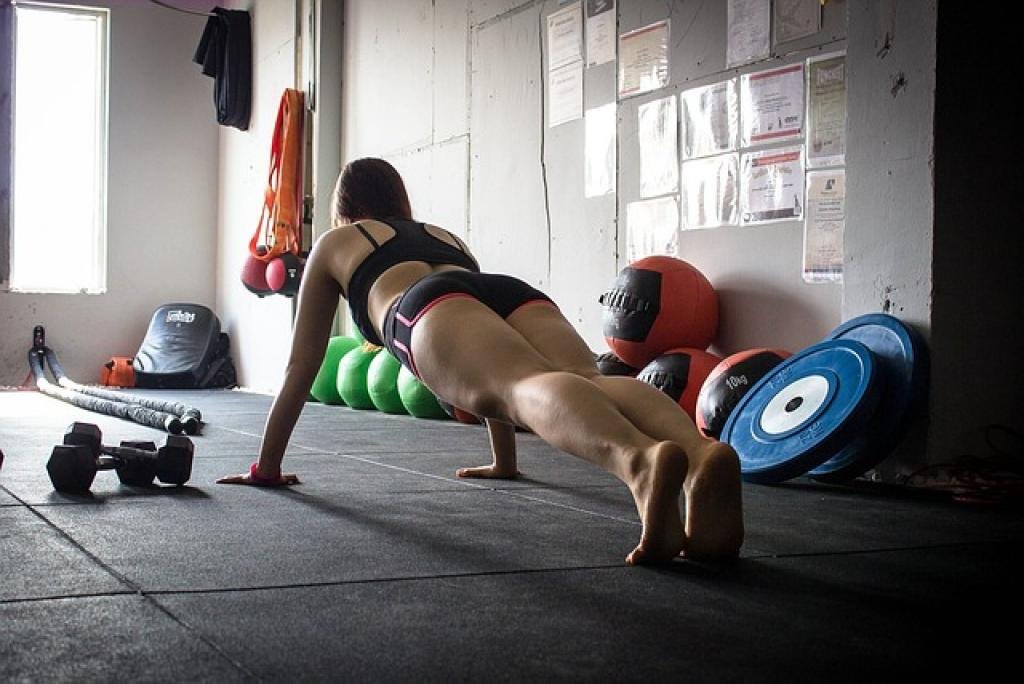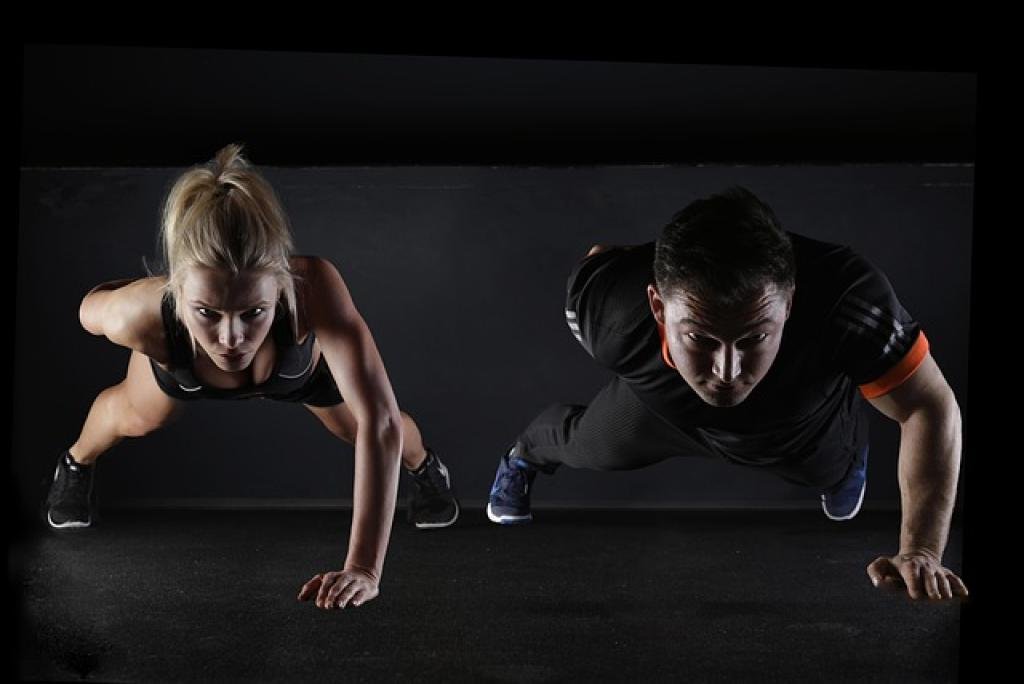We independently test and review fitness products using a research-based approach. If you buy through our links, we may earn a small commission at no extra cost to you. Read our Disclosure
Achieving a strong core is more than just about flaunting toned abs; it’s the powerhouse of our bodies, the center of balance, stability, and overall strength. Whether you’re an athlete, a busy professional, or simply on a mission to enhance your fitness, incorporating core workouts into your routine is a game-changer.
The great news? You don’t need a fancy gym membership or expensive equipment to get started. With just a little open space and some motivation, you can perform highly effective core exercises right in the comfort of your home. These workouts are designed to challenge, engage, and strengthen your core muscles, paving the way for improved posture, better movement, and enhanced daily living.
Let’s dive into these transformative core workouts that you can seamlessly integrate into your everyday routine!
Benefits of Core Strengthening Workouts at Home
Working out from the comfort of your home not only offers convenience but also numerous other benefits, especially when it comes to strengthening your core. First and foremost, these workouts can significantly enhance your balance and stability. A strong core is fundamental to maintaining proper alignment and steadiness in nearly every activity you do.
Consistently engaging in core exercises can also lead to reduced back pain. By strengthening the muscles around your spine, you provide much-needed support and relief to your lower back. This can lead to improved posture, which is often compromised by long hours of sitting at a desk.
Another significant benefit is an increase in functional strength. Whether you’re lifting groceries or playing with your kids, a robust core supports everyday movements, making them easier and more efficient. Not to mention, dedicating time to core workouts at home can boost your overall fitness and performance, allowing you to tackle more challenging physical activities with confidence.
Plus, there’s the bonus of saving time and cultivating the self-discipline that comes from maintaining a home workout routine. Transform your living space into a personal fitness studio and start reaping all these benefits right away!

Key Exercises for Building Core Strength
Jumping into core workouts at home is super simple and surprisingly effective with just a few key exercises. Start with the classic plank, a staple for core conditioning. By propping yourself on your forearms and toes, you engage multiple muscles, enhancing overall strength and endurance.
Next up, try the bicycle crunch. This dynamic movement not only targets your abs but also activates the obliques. Lie on your back, bring your knees toward your chest and alternate touching opposite elbows to knees.
Incorporate Russian twists for a powerful rotational routine. Sitting with your back straight, feet off the floor, twist your torso side to side for a deep core burn. This exercise enhances both flexibility and strength.
Don’t overlook the power of leg raises, which are phenomenal for engaging the lower abdomen. Lying flat, lift your legs slowly towards the sky and back down, ensuring control to maximize impact.
Finally, add some variation with mountain climbers. This full-body workout keeps your heart rate up while toning your core. Start in a high plank and alternate driving your knees toward your chest at a steady pace.
By regularly including these exercises in your home routine, you’ll build a rock-solid core in no time!
How to Design an Effective Home Core Workout Routine
Crafting a core workout that fits into your home routine is about balance, variety, and consistency. Start by selecting a mix of exercises that target different areas of your core, ensuring a well-rounded approach. Aim for a combination of static and dynamic movements, such as planks for endurance and bicycle crunches for dynamic engagement.
Structure your routine by setting up circuits. A circuit is a set of exercises performed one after the other with minimal rest in between. For example, you could do a 30-second plank, followed by 15 bicycle crunches, 20 Russian twists, and finish with a set of leg raises. Repeat this circuit 2-3 times, depending on your fitness level.
Time your sessions to fit your schedule. A focused 15-20 minute workout can be just as effective as longer sessions when done consistently and with proper form. Prioritize quality over quantity—perform each movement slowly and in control to maximize effectiveness.
Remember to listen to your body and include rest days. Give your muscles time to recover and grow stronger, preventing burnout and injury. Adjust exercises and reps as you advance to keep your routine challenging and engaging.
With these tips, you can tailor a home workout plan that is both effective and sustainable!
Tools and Equipment for Home Core Workouts
While bodyweight exercises are fantastic for core workouts, introducing some simple tools can amplify your routine’s effectiveness and keep boredom at bay. One of the most versatile pieces of equipment is the exercise mat. It provides a comfortable and supportive surface for various exercises, ensuring proper alignment and cushioning your joints.
Essential Equipment for Boosting Workouts
A stability ball is another great addition. It challenges your balance and engages your core in a whole new way, whether you’re performing planks, crunches, or bridge exercises. Resistance bands are compact yet effective, offering varying levels of resistance to increase the intensity of your workouts.
Medicine balls and kettlebells can add a dynamic element to your core routines. They’re perfect for Russian twists or weighted sit-ups, providing that extra challenge to build strength. A simple pair of sliders or even towels on a hardwood floor can work wonders to enhance exercises like mountain climbers by adding an extra dimension of difficulty.
Start with basic tools and gradually expand your collection as you progress. These simple yet effective additions can elevate your home workouts, making them both fun and challenging.
Integrating Core Strengthening into Your Daily Routine
Incorporating core strengthening into your daily life can be seamless and beneficial. Start by setting aside a specific time each day dedicated to core exercises, even if it’s just a quick 10-minute session. Consistency is key, so find a time that best fits your schedule, whether it’s in the morning to energize your day or in the evening as a wind-down.
Look for opportunities to integrate core exercises into everyday activities. Simple actions like tightening your abdominal muscles during housework or maintaining good posture at your desk can help engage your core throughout the day.
Enhance your routine by setting achievable goals. You can aim for improving plank duration or increasing reps over time, keeping your motivation high and your progress steady. Listen to your body and adjust your routine as needed to cater to your comfort and fitness level.
Involve core exercises in your warm-ups or cool-downs when engaging in other workouts. This not only helps in building core strength but also prepares your body for various physical activities, improving performance and reducing the risk of injury.
By incorporating these small yet effective changes, core strengthening can become a natural and rewarding part of your daily routine.
Progressive Overload: Advancing Your Core Workouts
To continue reaping benefits and avoid plateaus, it’s crucial to incorporate the principle of progressive overload into your core workouts. This method involves gradually increasing the intensity, volume, or difficulty of exercises to challenge your muscles continuously.
Start by slowly increasing the duration of static exercises like planks. If you normally hold a plank for 30 seconds, try extending it by a few seconds in each session. For dynamic exercises, gradually add more repetitions or sets to your routine.
Consider incorporating additional resistance using weights or resistance bands. Adding a weighted vest or holding a dumbbell during exercises like sit-ups or Russian twists can significantly increase the load and intensity.
Varying the exercises within your routine is another way to apply progressive overload. Introducing new and more complex movements can challenge different muscle groups and prevent your workouts from becoming stagnant.
Regularly assess your progress and set new goals, whether it’s increasing your plank time, lifting heavier, or mastering a new exercise. By continuously pushing your limits and diversifying your workouts, you’ll build a stronger core over time and maintain your motivation.
Mindful Breathing Techniques for Core Engagement
Integrating mindful breathing techniques into your core workouts can enhance muscle engagement and help maintain proper form. Conscious breathing not only provides sufficient oxygen to your muscles but also helps you focus on the exercises, leading to improved performance.
Begin by practicing diaphragmatic breathing, or "belly breathing." This involves deeply inhaling through the nose, allowing your diaphragm to expand and your abdomen to rise. As you exhale through the mouth, draw your navel toward your spine, engaging your core muscles.
Incorporate this breathing technique into each exercise. For instance, during a plank, inhale deeply and exhale slowly, focusing on contracting your abdominal muscles with each breath. This not only stabilizes your body but also maximizes core activation.
Mindful breathing also aids in maintaining a steady pace during dynamic exercises like crunches or mountain climbers. Coordinate your breath with each movement, inhaling during the effort phase and exhaling as you return to the resting position.
With practice, mindful breathing will naturally become part of your workout routine, enhancing core engagement and overall effectiveness. By focusing on your breath, you can achieve greater control, energy, and awareness during your exercises.
Measuring Success: Tracking Progress and Achieving Goals
Tracking progress is essential for maintaining motivation and achieving your fitness goals. Start by setting clear, attainable objectives, whether it’s increasing your plank duration or mastering a new exercise. Write these goals down to keep them visible and tangible.
Utilizing Tools for Progress
Consider using tools like fitness apps or journals to log your workouts. Documenting the number of reps, sets, and any new milestones helps in visualizing progress over time. Regularly review your records to identify patterns and areas where you can enhance your workouts.
Incorporate progress photographs or regular measurements as additional ways to track changes in your core strength and body composition. Visual and measurable results can be incredibly encouraging and provide a clearer picture of your advancements beyond the scale.
Celebrate small victories along the way to keep your journey enjoyable and rewarding. Whether it’s achieving an extra minute in a plank or successfully completing a challenging set, these accomplishments are crucial stepping stones.
Stay flexible in your approach, adjusting goals as you progress and your abilities improve. By consistently measuring success and embracing your journey, you remain motivated and on the path to achieving a stronger core and overall fitness.
The Bottom Line: Consistency and Patience for Stronger Core
Building a stronger core at home is an empowering journey that relies heavily on consistency and patience. It’s about making core strengthening a regular part of your routine, just like brushing your teeth or enjoying your morning coffee. By dedicating even a short amount of time each day, you’ll start to see and feel the benefits over time.
Remember, progress doesn’t happen overnight. It requires time and effort, and it’s important to be patient with yourself as you work towards your goals. Celebrate small milestones along the way; each is a critical step towards improved core strength and overall fitness.
Keep your workouts fresh by introducing new exercises or increasing the intensity gradually. This not only challenges your muscles but also keeps your routine exciting and engaging. Listen to your body and allow recovery time when needed to prevent burnout and injury.
Ultimately, the most successful fitness journeys are those that are sustainable and enjoyable. Listen to your body, set realistic goals, and view each workout as a positive investment in your health and well-being. With dedication and patience, you’ll not only build a stronger core but also enhance your balance, stability, and quality of life.
Stay committed to your core journey, and embrace the gradual improvements you make along the way. Consistency and patience truly pay off, leading you to a fitter, healthier, and happier self.



